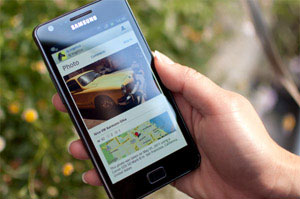With visions of four legged robots rambling through the forest, a pair of virtual reality goggles for every person, and drones flying overhead beaming cyberspace access, the internet giants are infatuated with “the next big thing.” However, while the internet giants are pre-occupied with capital intensive robotic ventures, every day run-of-the mill companies can still get plenty of value from meeting the needs of the mobile consumer.
Mobile data are on a torrid trajectory. A CNN Money article cites studies from Telco equipment companies such as Ericsson and Cisco reporting mobile traffic doubling over the past two years, and traffic on mobile data networks at a princely 885 petabytes in 2012. The article also mentions that wireless traffic will grow 66% annually for the next five years.
These numbers on mobile traffic are too abstract for most of us. Let’s take a closer look at some trends—closer to home—from a Business Insider report on mobile media consumption:
- 1/5 of consumer media consumption is done on a mobile device (yes, that means your household TV set is losing ground every single day)
- Consumers are spending as much time on mobile devices as desktops/laptops (talk about crossing the Rubicon!)
- Tablet shipments are up 83%, PC shipments are down 13% (just looking around it seems just about everyone has a smartphone/tablet…)
- Mobile advertisements make up 41% of Facebook’s ad revenue (stunning turnaround for a company that just a few years ago was in danger of being left out of the mobile era)
An article from Atlantic Magazine interviewing Walmart’s SVP of Mobile and Digital really brings these statistics to life. For example, this retail giant claims that over the 2013 Christmas shopping season, 50% of the traffic coming to Walmart.com was from mobile devices. Read that again—50% of the e-commerce site traffic came from mobile devices!
And mobile can help with in-store shopping too. Using the Walmart app (downloadable on smartphone or tablet), an individual can use “in-store mode” to search for items on the shelf. That means no longer tracking down Harry or Susan to ask them where the Tide laundry pods are located. And shoppers can also use “Scan and Go” to scan items as they walk through the store. This then, tabulates a running total of items in their shopping cart, which of course can be very beneficial for customers on a tight budget.
The tablet craze is just getting started too. Gartner predicts that by 2015, tablets will outsell PCs (desk based and notebooks). That’s a tough one to believe for those of us tethered to a desktop PC every day! And as mobile data plans get less expensive (via mobile carrier price wars), it’s not hard to fathom thatthe final 40% of mobile users holding out in the U.S. will upgrade to a smartphone. If data like these don’t change the mobile plans of retailers across the globe, I’m not sure what will.
Taking a look at the latest round of capital investments from the internet giants, it’s easy to believe they’re more infatuated with self-driving cars, robots and drones that deliver packages than driving value to mobile consumers. That should leave a pretty wide open gap for businesses of all stripes to invest in meeting the needs of the mobile consumer. Mobile isn’t anywhere near dead. In fact, it’s just getting started.




